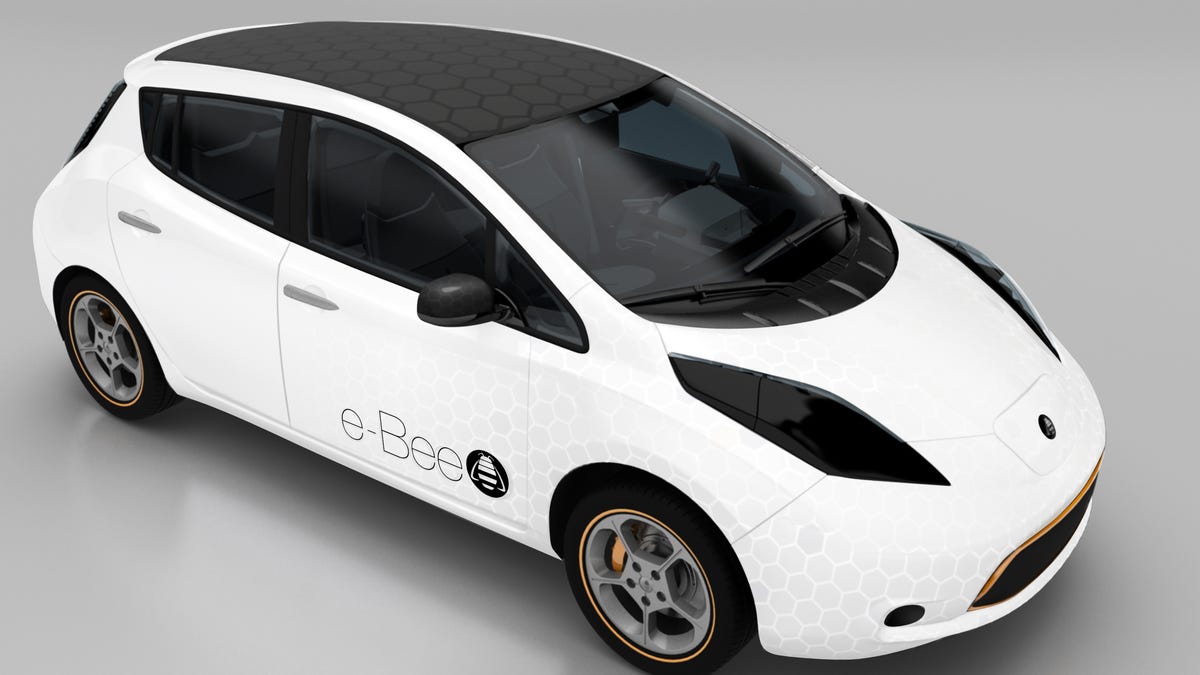Visteon e-Bee shows how we will drive in 2020
Automotive supplier Visteon will bring its e-Bee concept car to CES 2013, where it will demonstrate the future of electronics integration into cars.

In the year 2020, your car may recognize you when you get in, and immediately adjust the seat and mirrors to your preferences. At the same time, it could bring up your calendar on a screen, and automatically program your destination based on your next appointment. As passengers get in, each would have access to his own audio zone and be able to connect his smartphone and tablet to the car's own Wi-Fi hot spot.
Those are some of the technology promises built into automotive supplier Visteon's e-Bee concept car. The car, based on a Nissan Leaf electric vehicle, features a custom-built cabin showcasing Visteon's broad array of electronics and materials technologies.
One goal of the concept was to maximize interior space through smart packaging of vehicle components. Visteon created a new single climate control component, combining heating and air conditioning into one module. As the electric e-Bee does not have an engine, the component runs entirely on electricity. Using a heat pump, Visteon says its technology would increase the range of electric vehicles in cold climates, as it would use less electricity for cabin heating. This module lives under the hood in the e-Bee, freeing up space in the cabin previously dedicated to climate control systems.
In the e-Bee concept, the driver gets three screens. One, taking the place of the instrument cluster in current cars, shows not only vehicle information such as speed, but also navigation. Visteon points out that this screen makes it easier for automakers to see the same car in different regions of the world, as it is easier to localize software than to swap out analog gauges.
Related stories
Two capacitive touch screens off to either side of the steering wheel focus on the driver, and eliminate the need for any switchgear mounted on the dashboard. In this concept, the left screen controls headlights, climate control, and parking sensors, while the right screen offers infotainment features. The e-Bee also employs a screen in place of a rearview mirror, displaying a 180-degree rear view.
Visteon calls the interior electronics package its Mid-Range Infotainment Platform. Based on open-source software, the system is designed to be upgraded during the vehicle's life cycle. Along with features found in current cars, such as Bluetooth, navigation, and digital audio, the system includes Wi-Fi compatibility and near-field communications (NFC) for easy handshaking with devices brought into the car.
Interior surfaces are covered in recycled polypropylene, manufactured and decorated using Visteon processes. The company says this surface material reduces weight over current materials.
The e-Bee concept is designed to work as a personal or shared vehicle, anticipating future transportation scenarios. As such, it would support sharing services and multiple drivers, automatically configuring itself for each driver.
Visteon will display the e-Bee concept at CES 2013 the week of January 7, where CNET will get a close-up look at the car.

